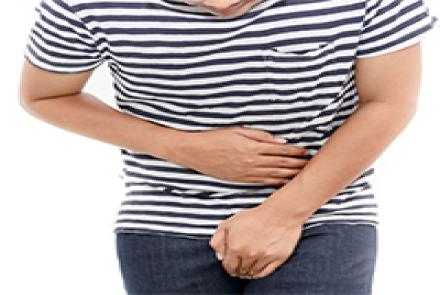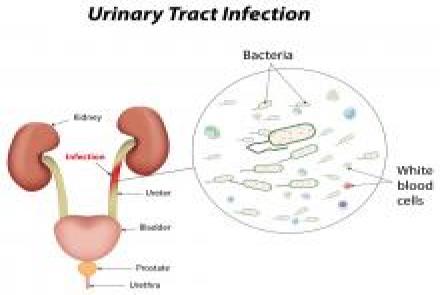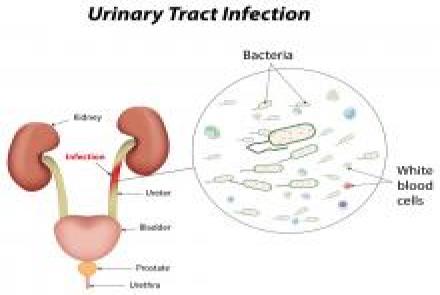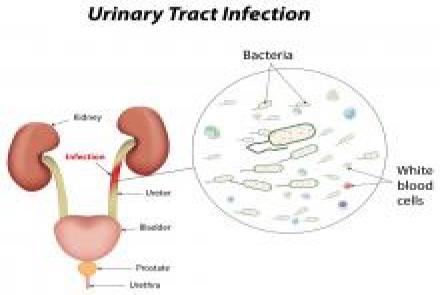
In India, it is estimated that about 6% of the adult population is infected with one or more sexually transmitted infections (STIs) at any given time, which means approximately 30–35 million new episodes of infection annually. Here are some frequently asked questions addressed
Sexually transmitted infections (STIs) or sexually transmitted diseases (STDs) are infections or diseases that one can get from any kind of sexual activity. . More than 30 different bacteria, viruses and parasites can be transmitted through sexual contact, including vaginal, anal, and oral sex. Most cases of STIs are caused by eight pathogens and 4 of them are presently curable which are syphilis, gonorrhoea, chlamydia and trichomoniasis. The other 4 are viral infections, hepatitis B, herpes simplex virus (HSV), HIV, and human papillomavirus (HPV) which can be treated for symptoms but not cured. STIs are highly contagious but their spread can be prevented by following good sexual hygiene and regular testing.
What are the symptoms of STIs/STDs ?
Symptoms depend on the type of STI contracted. In early stages, there may be no symptoms that appear. General symptoms such as rash, fever, chills, night sweats, aches, weight loss, diarrhea and jaundice may also be seen.
Symptoms seen in males:
- Burning sensation or itching in the penis area
- Discharge from the penis (also known as a drip)
- Pain around lower abdomen/pelvis area
- Sores, bumps, warts or blisters on the penis, anus or in the mouth
- Burning sensation and pain during urination or during bowel movements
- Increased frequency of urination
- Swelling in scrotum/testes
- Sore, swollen lymph nodes in the groin area
Symptoms seen in females:
- The most common symptom is change in the vaginal discharge that may have a bad odour or may be discoloured. There may also be prolonged unusual discharge lasting for many days.
- Painful or painless bumps or sores on the genitals, anus, or mouth.
- Burning, itching, or pain during urination or during sexual intercourse.
- A sense of heaviness or pain in the lower abdomen or pelvic area.
- Bleeding between periods or after sex.
- Warts can develop in or around the genitals due to human papillomavirus (HPV).
- Itching, soreness, or bleeding from the anus.
How prevalent are Sexually transmitted infections (STIs)?
- More than 1 million curable STIs are acquired every day worldwide in people 15–49 years old, the majority of which are asymptomatic.
- In 2020 there were an estimated 374 million new infections in people 15–49 years with 1 of 4 curable STIs: chlamydia, gonorrhoea, syphilis and trichomoniasis.
- In India, it is estimated that about 6% of the adult population is infected with one or more STIs at any given time, which means approximately 30–35 million new episodes of infection annually. The actual prevalence varies, with higher rates of 20-30% in high-risk groups, and women face a greater biological risk and more severe complications from STIs.
What are the types of sexually transmitted infections?
The most common types of sexually transmitted infections are:
Chlamydia - Many people who acquire chlamydia do not have any symptoms, while some may show symptoms many weeks after transmission. Common symptoms include pain during urination, penile discharge and swelling in testicles. Women may have bleeding between periods, pain during urination, unusual vaginal discharge or may have mild pain in the lower abdomen. Sometimes there may be rectal pain, discharge and/or bleeding.
Genital herpes - The symptoms of herpes can be difficult to identify, and many people may not have any symptoms at all. Symptoms usually occur between 2 days and 2 weeks after transmission. Common symptoms include tingling, itching, or burning of the skin in the area where the blisters later appear. Blisters may appear on the penis or testicles, around the vaginal area, on and around the anus, buttocks, thighs, lips, tongue, gums, and other parts of the body. Other symptoms include muscle pain in the lower back, buttocks, thighs, or knees, swollen and sometimes tender lymph nodes in the groin, with loss of appetite and fever.
Genital warts -Most cases are detected incidentally as most are asymptomatic cases of the common HPV types 6 and 11 which cause almost (90%) of the anogenital warts. Sometimes one may have ulcer like lesions because of HPV types 16 and 18, which can progress to malignancies when triggered by issues like folate deficiency, ultraviolet light exposure, immunosuppression, or smoking.
Gonorrhoea - In men, it usually causes testicular pain, painful urination, pus discharge from the foreskin of penis, and pain with defecation because of the inflammation of the rectum or prostate. In women it may cause unusual vaginal discharge, painful urination, and vaginal bleeding between periods, though many have no symptoms at all. There may be general symptoms like, sore throat, redness of the eyes, joint pain, and skin lesions.
Hepatitis B - Many may not experience any symptoms. Those that do, usually have fatigue, weakness, jaundice (yellowish discoloration of the skin and eyes), loss of appetite, pain in the abdomen, dark-coloured urine and stools that may be pale or clay-coloured.
HIV/AIDS -Many people may have no symptoms or may have acute viral syndrome which includes symptoms like fatigue, loss of appetite, fever, chills, joint pains, muscle ache, or skin lesions. Signs of a more advanced infection may be fever, diarrhoea, shortness of breath, cough, and oral fungal infection. Acute retroviral syndrome may occur with non-specific symptoms like tiredness, muscle pain, skin rash, headache, sore throat, swollen lymph nodes, joint pain, night sweats, and diarrhoea. Which may occur early in 50% to 90% of new HIV-infected individuals, usually even before their antibody tests turn positive.
Human papillomavirus (HPV) - Most people with HPV will not have any symptoms at all. Those that do may have genital warts (flat and flesh-coloured or clusters of tiny bumps which appear as a cauliflower in the vagina/groin area in women or penis/groin area in men) and warts in the mouth or throat (spread through oral sex). The high-risk strains may lead to precancerous cell changes that may progress to cervical cancer and other cancers of the mouth, throat, and anus in some cases.
Pubic lice (crabs) - Pubic lice are tiny, wingless, parasitic insects that live in and feed on the blood from rough body hair, including pubic hair, armpits, and beards in men. They are also called "crabs" because their claws help them attach to hair, resembling tiny crabs. The most common associated symptom is intense itching in the genital area, which usually worsens at night. The itching may sometimes be associated with red or bluish spots from bites and sometimes a dark, powder-like substance in underwear.
Syphilis - There are three stages of syphilis:
- Primary Syphilis: It starts with a single, small, painless sore (chancre) where the bacteria entered the body which usually appears around three weeks after infection and lasts for several weeks. It may get better even without treatment.
- Secondary Syphilis: It causes non-itchy skin rash, mostly on the palms of the hands and soles of the feet, along with flu-like symptoms such as fever, fatigue, sore throat, and swollen lymph nodes. The symptoms usually get better on their own due to which there is a latent (hidden) phase where the person has no symptoms.
- Tertiary Syphilis: This is the most severe stage, which occurs 10 to 30 years after the initial infection. It may cause severe, permanent damage to the heart, brain (neurological issues), and other organs and may even lead to death.
Trichomoniasis - Many have no symptoms at all, making it easy to unknowingly spread the infection. Those that do may have discharge from the penis, pain during urination (dysuria), pain in testes, increased frequency of urination and or cloudy urine and inflammation of the urethra. In women, symptoms may include frothy, foul-smelling yellow or greenish vaginal discharge, itching, and discomfort during sex.
How are sexually transmitted infections transmitted?
A sexually transmitted infection may be transmitted from person to person through blood, semen, or vaginal and other bodily fluids. Sometimes STIs can also be transmitted from mother-to-child during pregnancy, childbirth, and breastfeeding. In case of men, uncircumcised men are more likely to get an STI than circumcised men.
What are the risk factors for sexually transmitted infections?
- Anyone who is sexually active is at risk of developing a sexually transmitted infection (sexually transmitted disease).
- One can also get an STI by sharing personal items like needles that contain your blood and body fluids in cases of:
- Tattoos or body piercings from unregulated/unsafe places
- Sharing needles while using intravenous drugs (Substance abuse)
Can I get a STI by open-mouth kissing?
Open-mouth kissing is usually considered to be a low-risk activity for the spread of STIs, especially HIV. However, open mouth kissing for a long time could damage the skin around the mouth and lips which could possibly cause HIV to pass from an infected person to a partner. Because of this risk, it is recommended to use caution with an infected partner.
What are the complications of STIs ?
- Infection can spread in the urethra and prostate or pelvis causing pelvic inflammatory disease (PID).
- They also cause swelling and soreness of the testes.
- Chronic pain in pelvic area and lower back.
- Increased risk of other STIs, including HIV.
- If untreated or due to complications, they may cause infertility.
How are STIs diagnosed?
The doctor will usually ask about your symptoms along with your medical and sexual history. Following this, the doctor will perform a physical examination to inspect for any warts, swellings, rash, sores, discharge or enlarged lymph nodes and order additional tests to establish a diagnosis.
Different tests are used for each type of STI which the doctor determines for you. Tests usually done are:
- Blood test.
- Urine test.
- Swab test from an infected area like the mouth or genital sore
- Fluid sample from skin sores.
- A discharge or cell sample from your body (usually the urethra, penis, vagina, anus, or throat).
Usually a Nucleic Acid Amplification Tests (NAATs) is done from the sample.
How often should I get tested for STIs?
Usually, an annual screening for sexually transmitted infection is recommended. One may choose to get tested more often, like every 3 to 6 months, if one has multiple sexual partners or if one’s partner has multiple sexual partners. Since many STIs are asymptomatic, regular testing helps to detect and treat STIs one may not even know they have.
How to prevent STIs?
STI is best avoided by following these simple yet effective ways:
1. Abstaining from having sexual contact with an infected person.
2. Having Open communication with your partner/s about sexual health.
3. Protection
- Using a barrier contraceptive (condom etc.) correctly always before having sexual contact.
- Having a sexual relationship with only one, long-term partner who has no infections.
- Limiting the number of sexual partners; avoid unknown exposure as many people may not have symptoms but may be carriers.
- Using sterile needles always for all injections.
4. Practicing good hygiene
Males: If you're not circumcised, regularly clean underneath the foreskin with soap and water. Return your foreskin to its usual position after sex.
Females: Wash the genital area with mild (unscented) soap and warm water before sex. Thorough handwashing is essential before any intimate contact as the hands touch many surfaces and may harbour unwanted bacteria and viruses. Urinating after sex can help flush out bacteria that may have entered the urethra.
5. Vaccination
HPV Vaccine: This vaccine is over 99% effective and requires 2 dosages given 6 to 12 months apart.
Females: The vaccine is most effective when given before any potential HPV exposure, ideally in early adolescence, and is approved for women up to age 45.
- Ages 9–14: Two doses are recommended, given 6 to 12 months apart.
- Ages 15–26: Three doses are recommended over a six-month period.
- Ages 27–45: Women in this age group should talk to their doctor to see if the vaccine is right for them.
Males: The vaccine is recommended for all boys and young men, ideally starting around age 11 or 12 and before any sexual contact. Men up to age 26 should get vaccinated.
- Ages 9–26: Routine vaccination is recommended for all boys and men in this age group.
- Ages 27–45: Adults in this age range who were not adequately vaccinated when younger may get the HPV vaccine after discussing their risks and potential benefits with a doctor.
6. Prophylaxis
- HIV Pre-Exposure Prophylaxis: Pre-exposure prophylaxis (PrEP) is 99% effective in preventing HIV infections and the ideal candidates are those at substantial risk, such as people who have multiple sexual partners or open relationships. A person must test negative for HIV-1 before starting this therapy and at least every 3 months while on prophylaxis.
- Doxycycline Post-Exposure Prophylaxis: One may talk to the doctor about taking Doxycycline 200 mg, preferably within 24 hours (not >72 hours) of sexual contact without use of a condom. It has been found to reduce the subsequent incidence of chlamydia, gonorrhoea, and syphilis in many large-scale medical studies.
References
- Cleveland Clinic. “Pubic Lice (Genital Crabs): Symptoms, Treatment.” Cleveland Clinic, 6 Feb. 2023, my.clevelandclinic.org/health/diseases/4522-pubic-lice-crabs.
- “Sexually Transmitted Diseases: Symptoms, Diagnosis & Treatment.” Cleveland Clinic, 2 Mar. 2023, my.clevelandclinic.org/health/diseases/9138-sexually-transmitted-diseases--infections-stds--stis.
- Garcia, Michael Ray, and Anton A. Wray. “Sexually Transmitted Infections.” PubMed, StatPearls Publishing, 2024, www.ncbi.nlm.nih.gov/books/NBK560808/.
- Centers for Disease Control and Prevention. Hepatitis B & Sexual Health. Publication No. 21-1115, October 2013. CDC, https://www.cdc.gov/hepatitis-b/media/HepBSexualHealth.pdf
- Mayo Clinic. “Sexually Transmitted Diseases (STDs) - Symptoms and Causes.” Mayo Clinic, 8 Sept. 2023, www.mayoclinic.org/diseases-conditions/sexually-transmitted-diseases-st….
- “Trichomoniasis - Symptoms and Causes.” Mayo Clinic, 2022, www.mayoclinic.org/diseases-conditions/trichomoniasis/symptoms-causes/s….
- Narain, Jai Prakash, et al. “Resurgence of Sexually Transmitted Infections in India.” Indian Journal of Sexually Transmitted Diseases and AIDS, vol. 45, no. 2, 2024, pp. 102–109, pubmed.ncbi.nlm.nih.gov/39886248/, https://doi.org/10.4103/ijstd.ijstd_120_24.
- NHS . “Sexually Transmitted Infections (STIs).” NHS, NHS, 25 June 2021, www.nhs.uk/conditions/sexually-transmitted-infections-stis/.
- Patel, NikhilkumarJagdishbhai, and Vihang S Mazumdar. “The Current Status of Sexually Transmitted Infections/Reproductive Tract Infections in Vadodara City: Health-Care Provider Perspective.” Indian Journal of Community Medicine, vol. 44, no. 3, 2019, p. 247, https://doi.org/10.4103/ijcm.ijcm_382_18.
- Santos-Longhurst, Adrienne. “Signs and Symptoms of Common STDs in Men.” Healthline, Healthline Media, 4 Nov. 2020, www.healthline.com/health/mens-health-signs-of-common-stds#herpes. Accessed 9 Sept. 2025.
- “Syphilis: Symptoms, Testing, Treatment, & Prevention | Mass General Brigham.” Www.youtube.com, www.youtube.com/watch?v=foUUeARe2f8.
- Urology Care Foundation. “What Are Sexually Transmitted Infections (STIs) or Diseases (STDs)? - Urology Care Foundation.” Www.urologyhealth.org, 2024, www.urologyhealth.org/urology-a-z/s/sexually-transmitted-infections.
- World Health Organization. “Sexually Transmitted Infections (STIs).” World Health Organization, World Health Organization: WHO, 29 May 2025, www.who.int/news-room/fact-sheets/detail/sexually-transmitted-infections-(stis).
















